
Review on KRXNY 2000W Pure Sine Wave Power Inverter: Reliable 12V DC to 🔌 110V 120V AC 60HZ Conversion for Car/RV Home Solar System – With LED Display by Eric Ramen

Stay away. Drains batteries quickly. Does not produce 2000W or pure sine wave.
Bottom line, this inverter drains my batteries about twice as fast as my Accurate Tools inverter. the mini-fridge hums like my rebuilt Harbor Freight sine wave inverter. Caveat: Input voltage and current are LARGE for running inverters. Too little or too much power and the inverter *should* shut down because it can't provide the correct voltage/current/sine wave output. Note: Unless otherwise noted, all measurements in the following text were made with a Meterk MK06 multimeter. The Meterk is a fantastic yet inexpensive tool that I highly recommend for any type of AC or DC electrical measurement. I have a group of six Duracell/East Penn EGC2 deep cycle golf cart batteries wired in series/parallel. They deliver at least 225 amps at 12 volts for 60 consecutive minutes. Despite this performance, to reduce the drain on the batteries, I run my Sprinter's engine to deliver juice through a 200-amp battery isolator. The alternator is rated at 150 amps and puts out 70 amps at idle. This pumps me to about 295 amps to run my microwave. However, 295 amperes is actually more amperes than the "main switch" that is designed for many households. The batteries are connected to each other as well as to the inverter via a 2/0 pure copper welded cable ("double duty"). Both cables are 3 meters long. The bare cable diameter is 0.36 inch or 9.2 mm. The inverter end of the cable has 0.25 inch/6mm copper spade lugs with copper washers on both ends. The ends of the battery have gold plated clips. The cables are connected to the grid diagonally across from each other to ensure juice flows from the entire array, not just the battery pair at each end (or in the middle). The last paragraph means that all the power from these batteries can easily flow into the inverter. This in turn allows it to do its job of generating 2000 watts (4000 peak) 60 Hz of pure sine wave electricity at 110-120 volts. It's a bit overkill to just use a microwave that draws 1500 watts (and nothing else at the same time). I bought this to replace an Accurate Tools 1500/3000W model that had a bad fan. This inverter powered my 1500w Sharp Carousel Microwave Oven. With this inverter, the microwave was as quiet as if plugged into a household outlet - a sign of pure sine wave performance. With the exception of fan noise, the inverter on my microwave never complained and never switched off at 1500 watts. My mini-fridge also ran so quietly that I only heard it for a second as the compressor kicked on. Because Accurate Tools inverters are in such high demand, it takes more than a week to ship. I needed an inverter before and ended up buying this KRXNY. As mentioned above, when I use the same microwave and/or refrigerator with this 2000/4000W KRXNY inverter, three undesirable things happen: 1) The microwave makes a loud buzzing noise. I had the same problem starting a microwave with a modified sine wave inverter. This leads me to believe that the KRXNY is not a pure sine wave inverter. 2) It actually takes a few seconds for the microwave to reach full power. The KRXNY inverter will start beeping (overload warning) once the microwave oven consumes about 1200W of output power. Within a few seconds, the oven reaches full power, consuming 1500 watts from the inverter. During the next 15 seconds, the inverter switches off. According to the multimeter, the voltage at the connection between the battery cables and the inverter racks drops to at least 12.4 volts. This is the reading I got when testing a now discontinued 1500 watt inverter. Just before shutting down, the KRXNY 200/4000 inverter's LCD reads "11.4" volts, which is a full volt below the multimeter reading and is likely the point at which the inverter is shutting down due to low input voltage. Perhaps the problem lies in the fact that this inverter does not correctly measure the voltage present on its contacts. All this time the measured voltage (with a reliable Meterk multimeter) drops to a minimum of 12.45V across the entire battery bank. This is because the inverter is pulling a lot of juice out of them (which it should be). . At this point, the inverter display shows at least 12.0 volts. Lower than the multimeter, but not such a significant discrepancy that it matters here. After the inverter shuts down, I can restart it with a manual reset (turn off the switch, wait a second, turn it back on). This entire process is 100% reproducible, which means that the inverter will shut down after withstanding a 1500W load for less than 30 seconds. The only way to cook food without turning it off is to turn the oven on at 40%. Incidentally, this does not mean that the oven consumes or produces 400 watts. Power level 4 means that the magnetron (the component that produces the actual radiation) is only working 4/10ths of the time that the microwave is running. Power level 4 is not what I bought this inverter for. 3) Oh yes. With the Accurate Tools inverter, my home battery lasted at least two days before I had to plug in an external charger. KRXNY batteries were discharged to 60% of their capacity within 12 hours. 50% is the minimum you want to achieve. So I let the engine run for a few hours just to charge the batteries. May be. But details that might help you or give you a reason to disagree. Both suit me. Luckily this KRXNY inverter is less than a week old. He comes back.
- High quality real copper inductor, waveform filtering, provides real pure sine wave AC output, protect your equipment. All major imported high bandwidth mosfets.
- Repair
New products
Comments (0)
Top products in 🔋 Jump Starters, Battery Chargers & Portable Power

Mroinge Automatic 6V/12V Trickle Charger For Vehicles, Motorcycles, Boats And More - Maintain Your Batteries With Ease!

29 Review

70mai Jump Starter Max Midrive PS06 black

37 Review
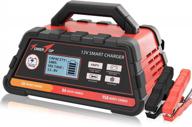
Keep Your Battery Fully Charged With A Smart 12V Charger/Maintainer Featuring Winter Mode

28 Review
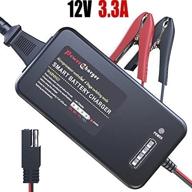
Efficient Charging With LST 7 Stages 5A Battery Charger - 3.3A 12V For Ultimate Performance

35 Review
Another interesting products
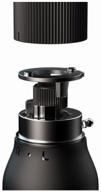
Xiaomi Mijia Ratchet Screwdriver 16 in 1 Screwdriver with Interchangeable Bits, 10 pcs, Black

22 Review
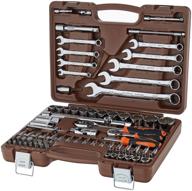
Tool set Ombra OMT82S12, 82 pcs, brown

22 Review
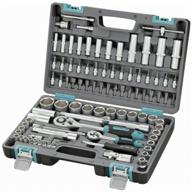
Bit and socket set Stels Tool set, 1/2", 1/4", CrV, plastic case 94 pcs, Stels, 94 pcs, black

46 Review
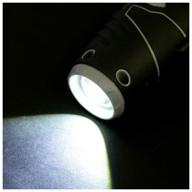
Rechargeable screwdriver OA-3,6F (433.0.2.00), 3.6 V, 1.3 Ah Li-ion, blister

46 Review

